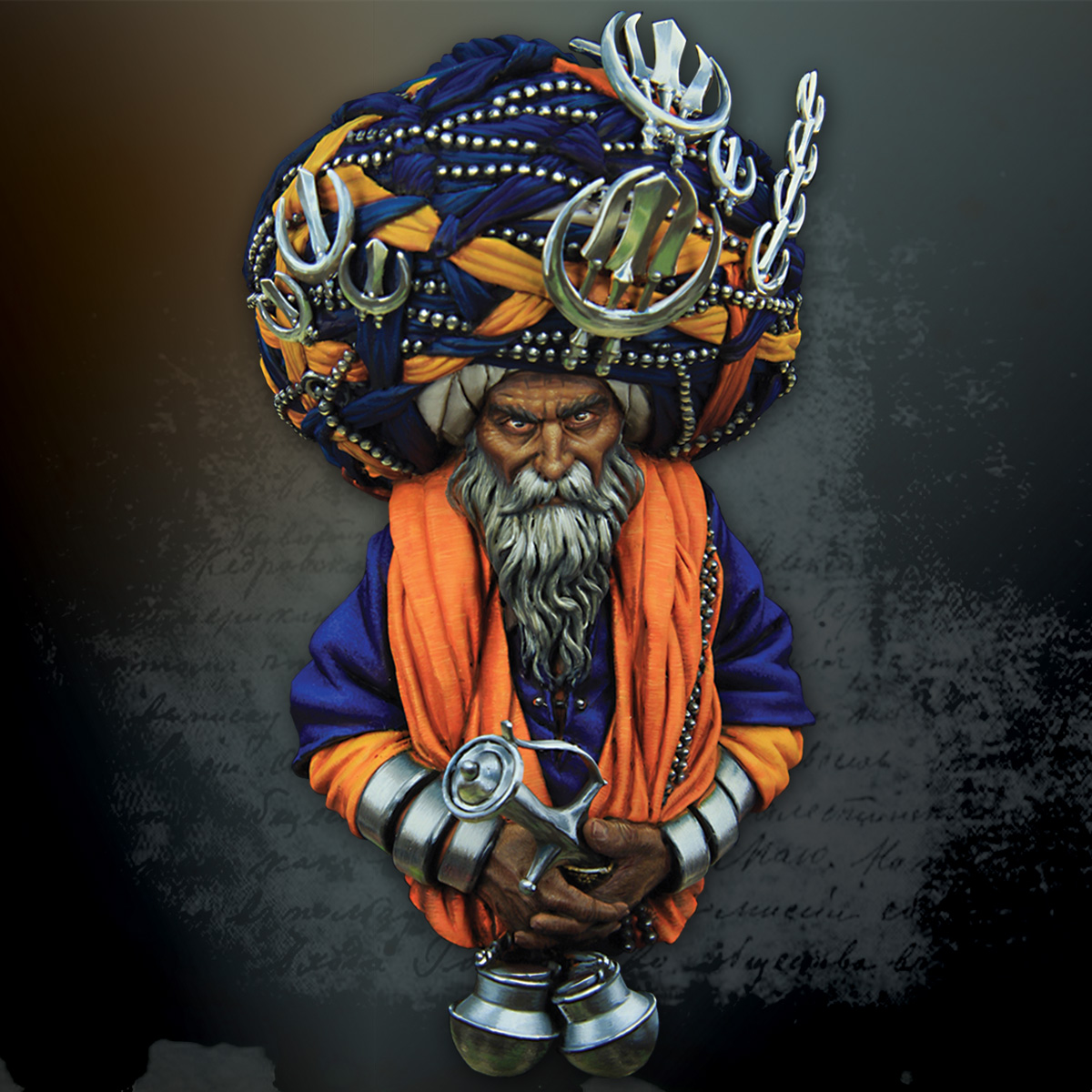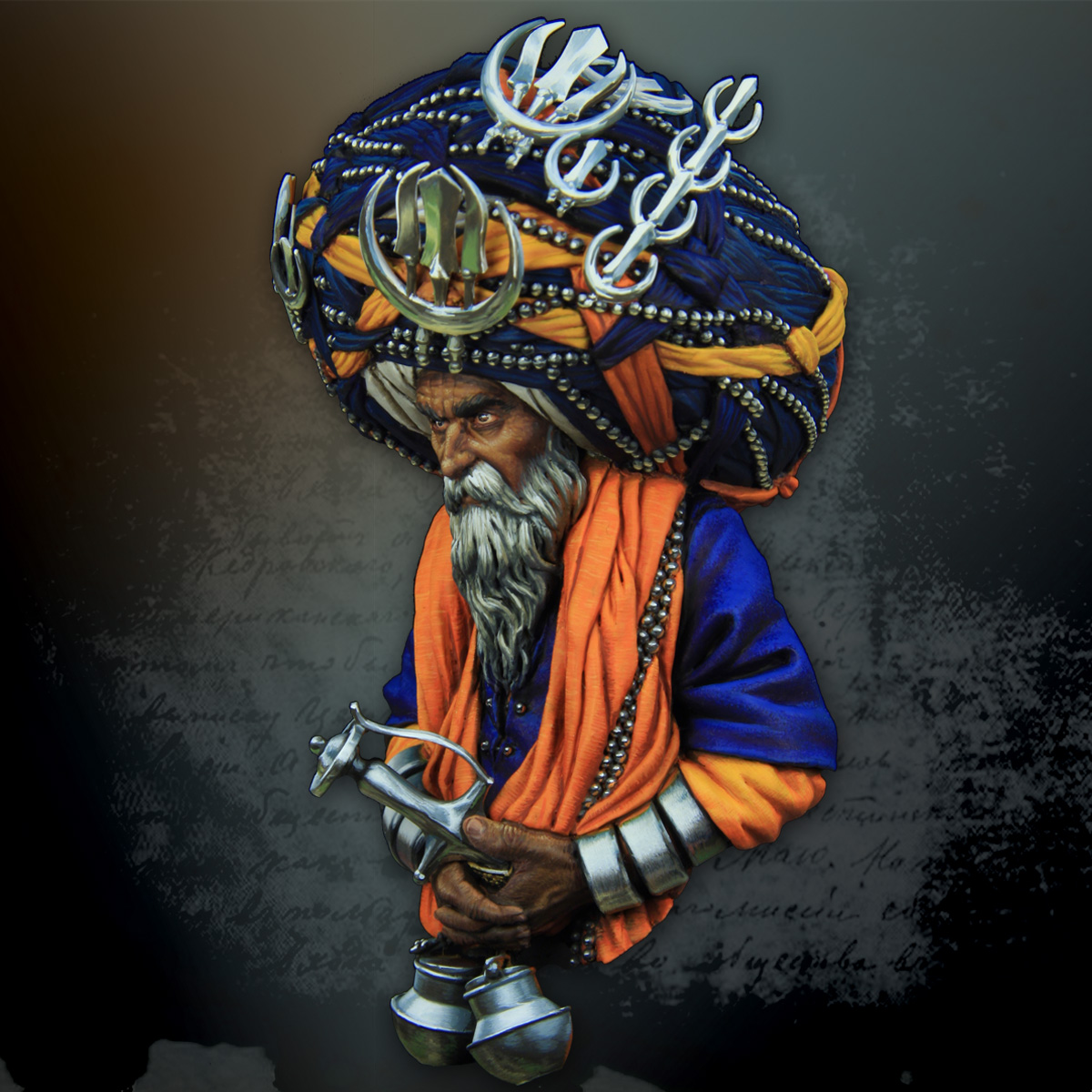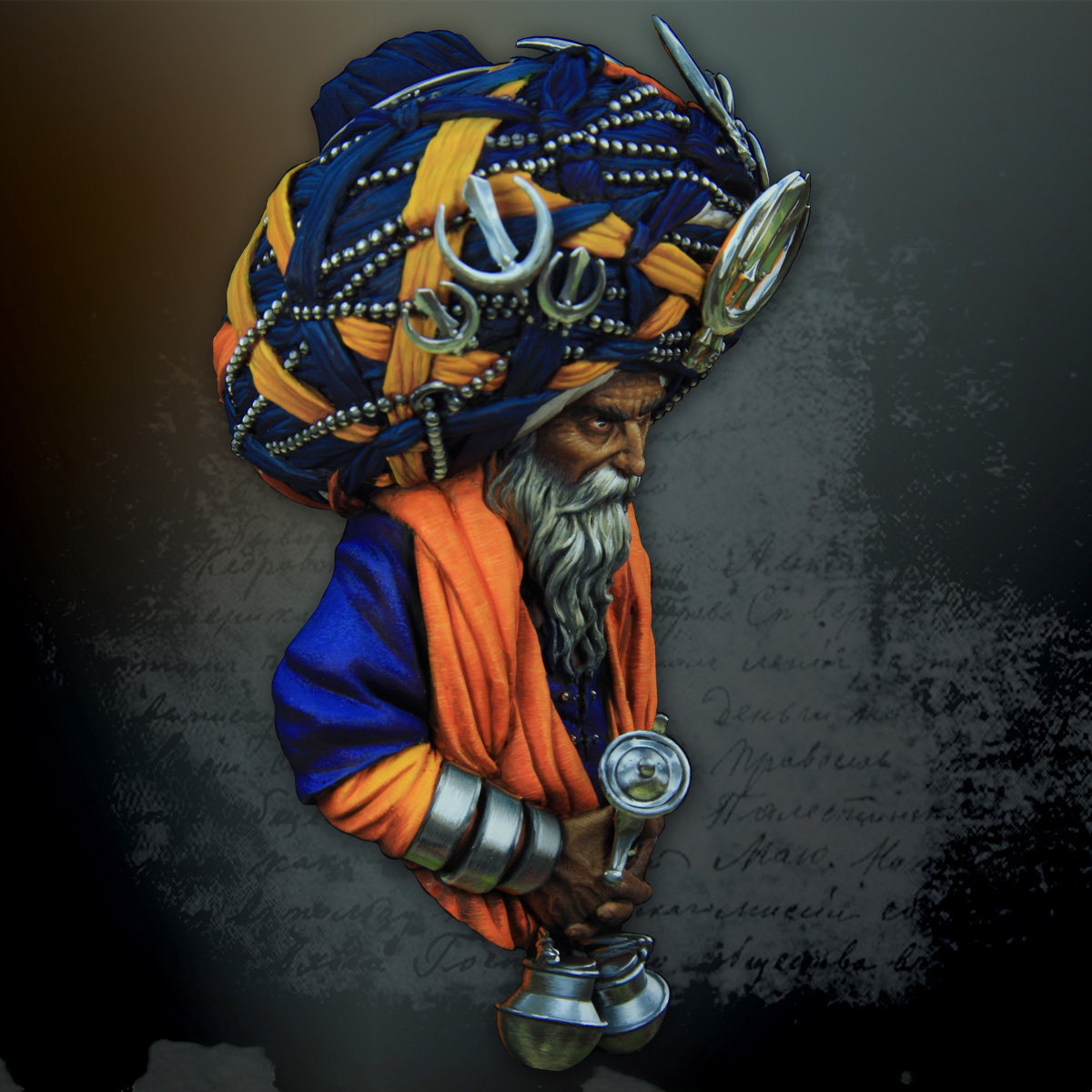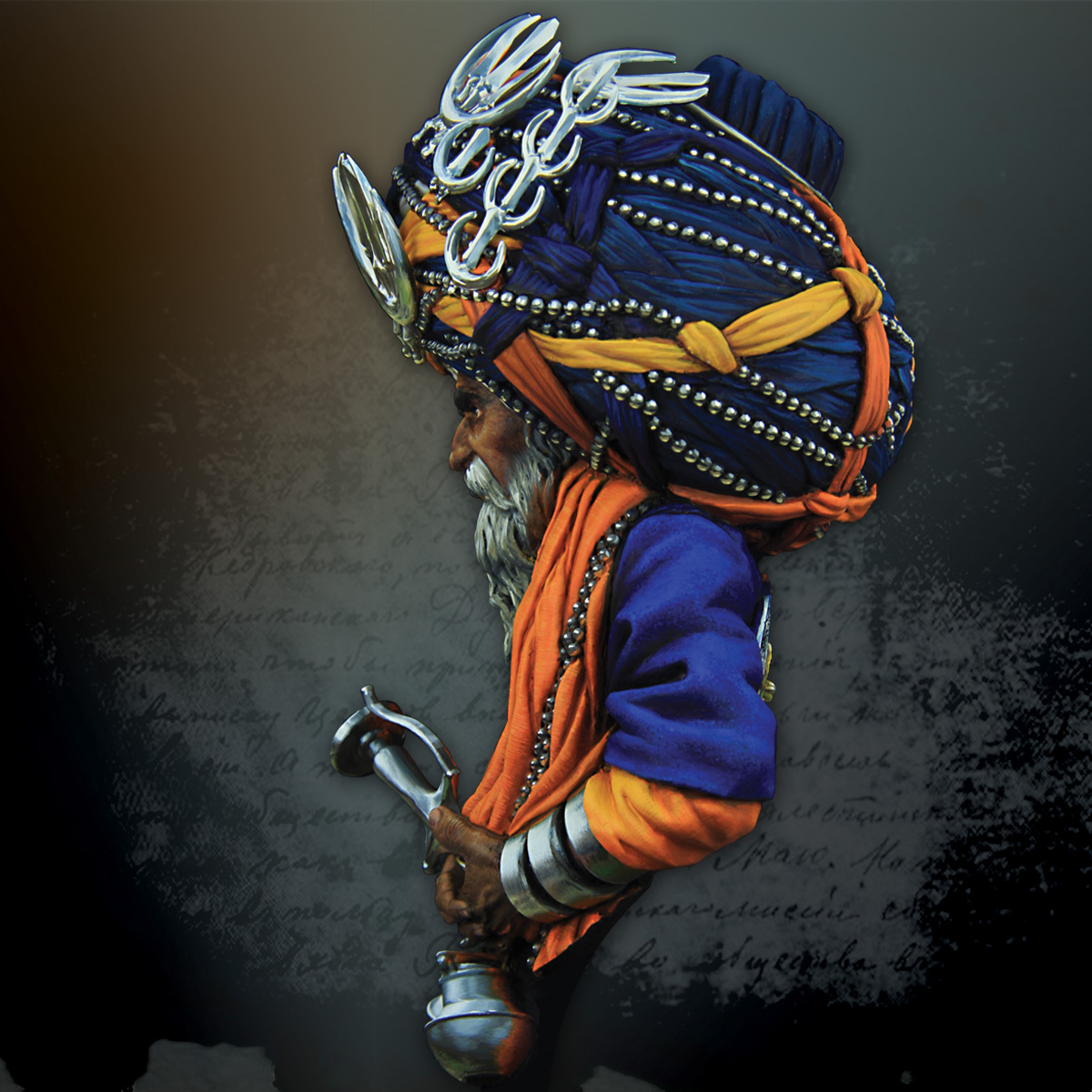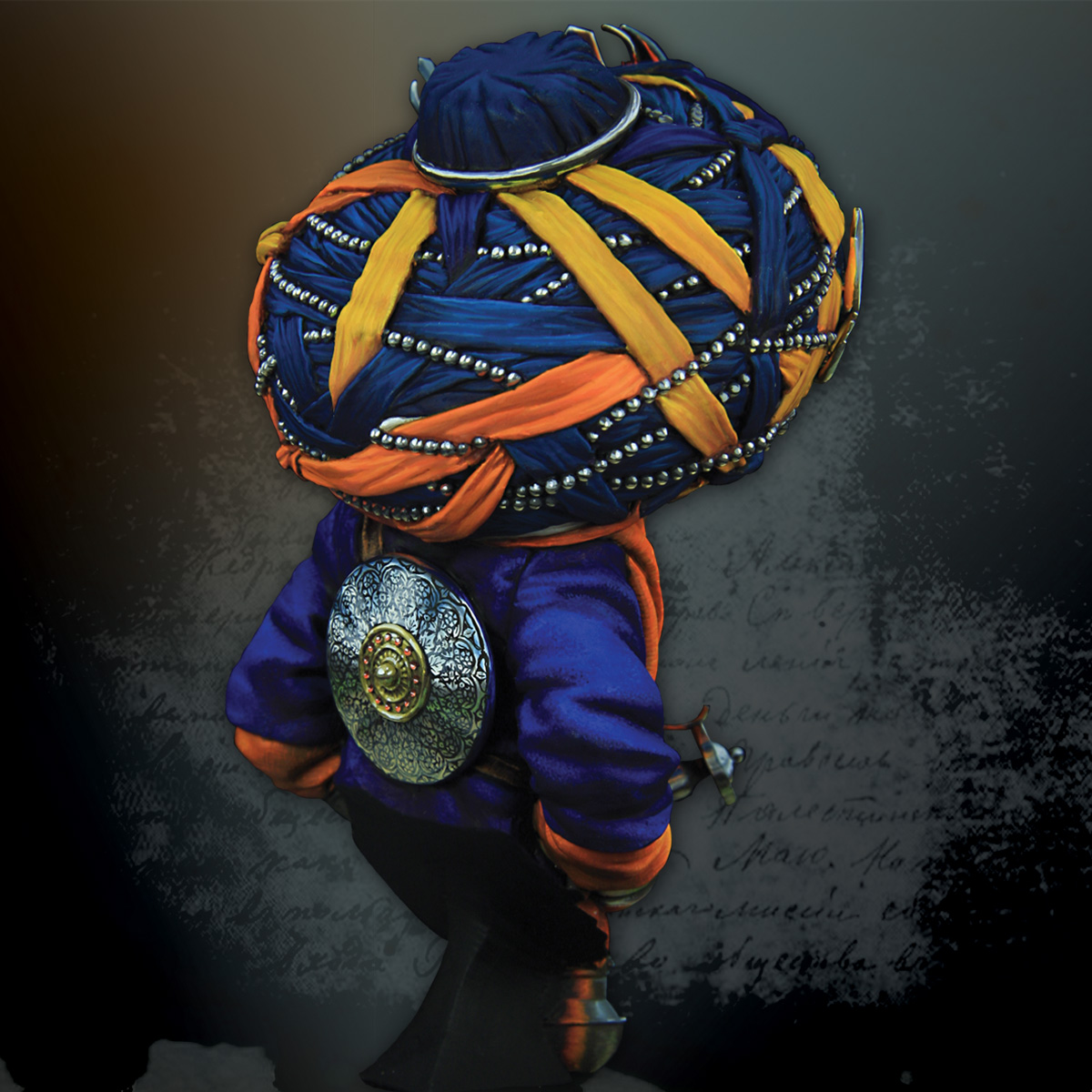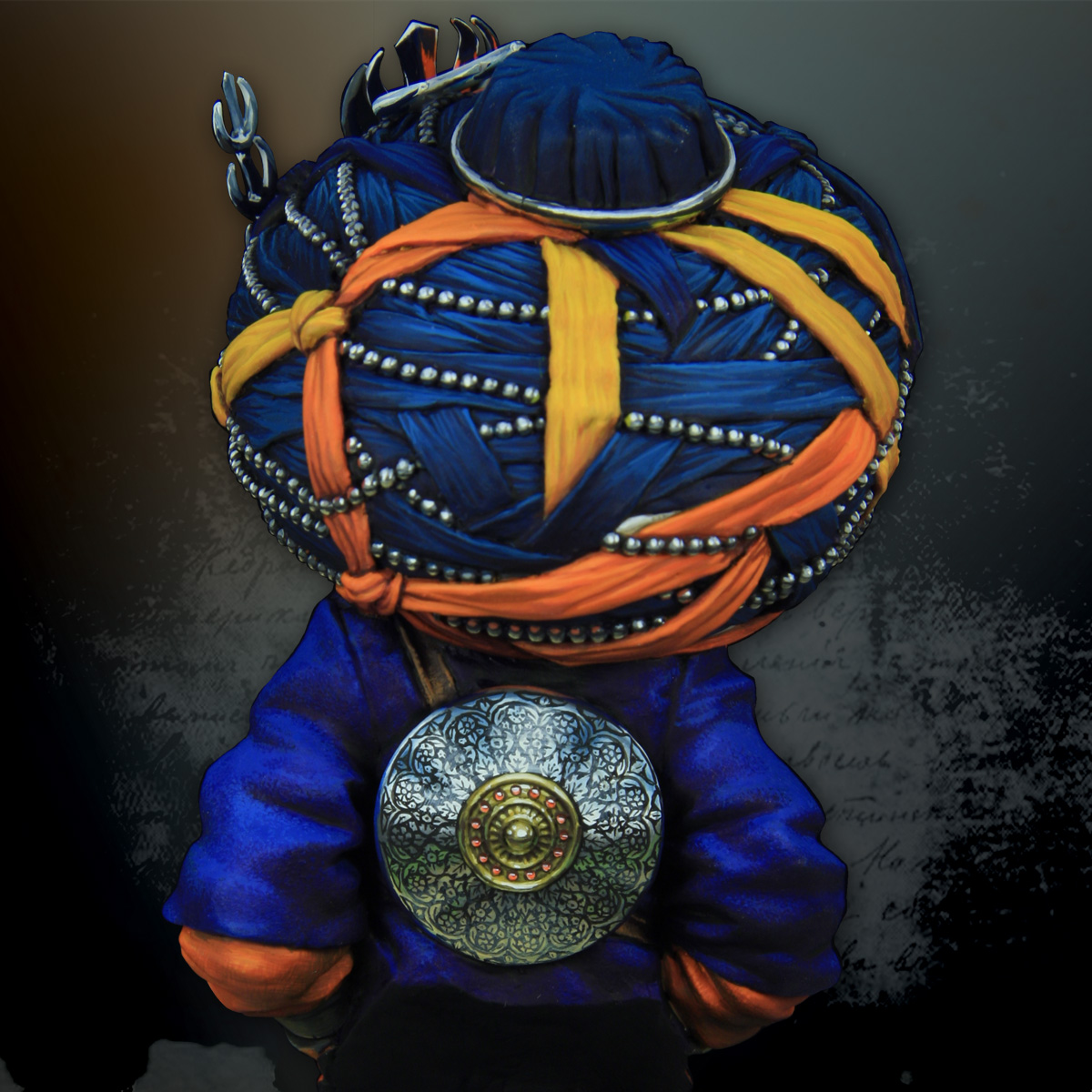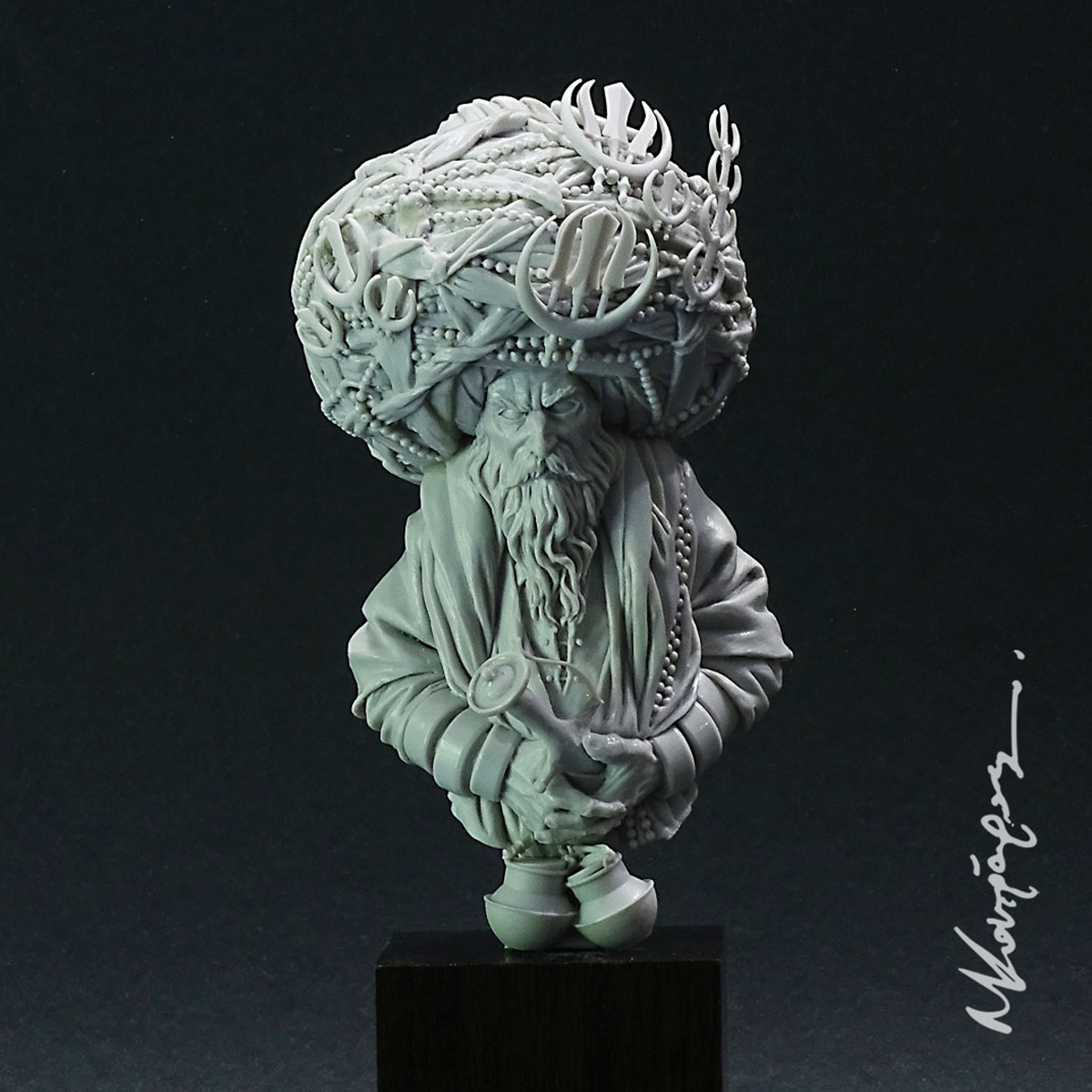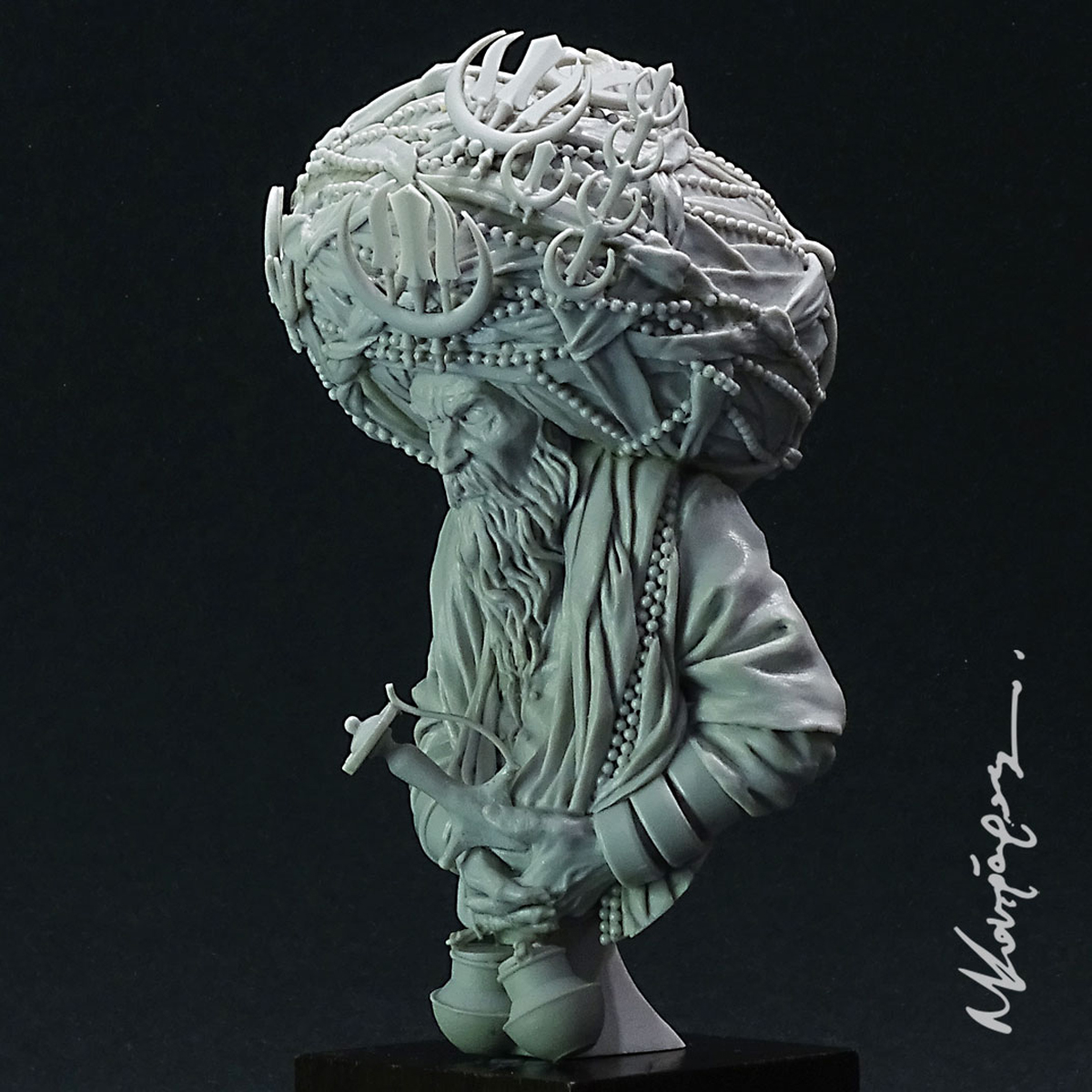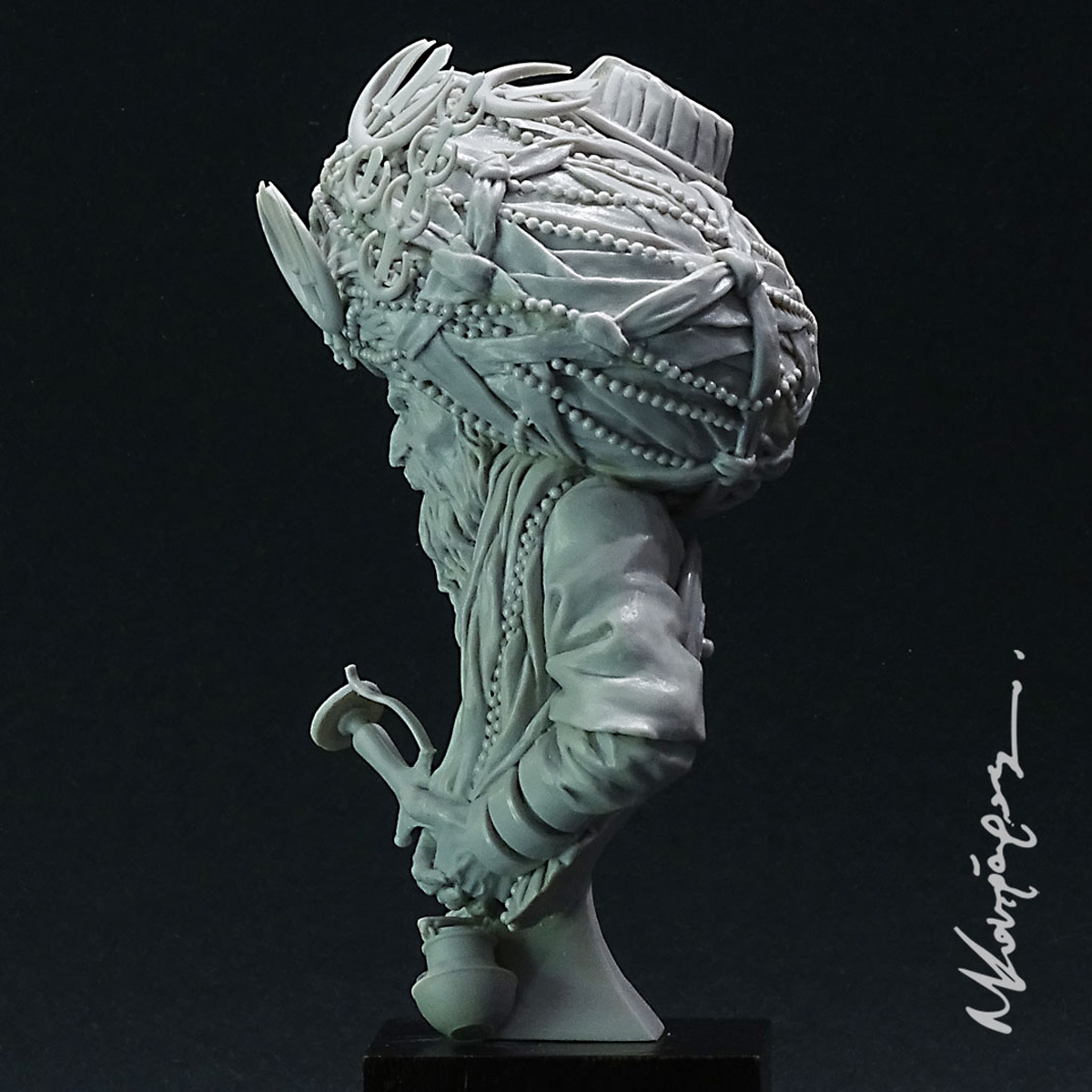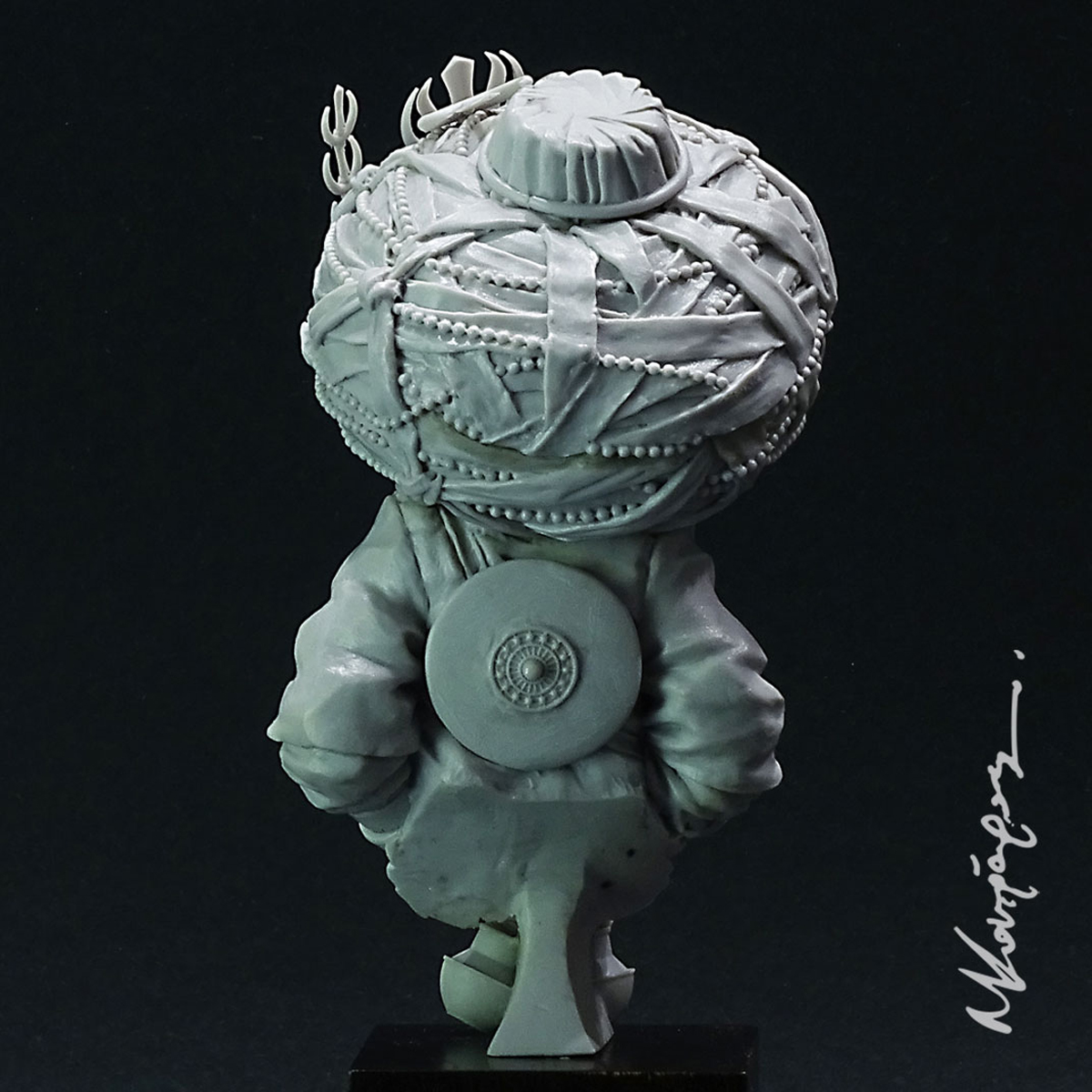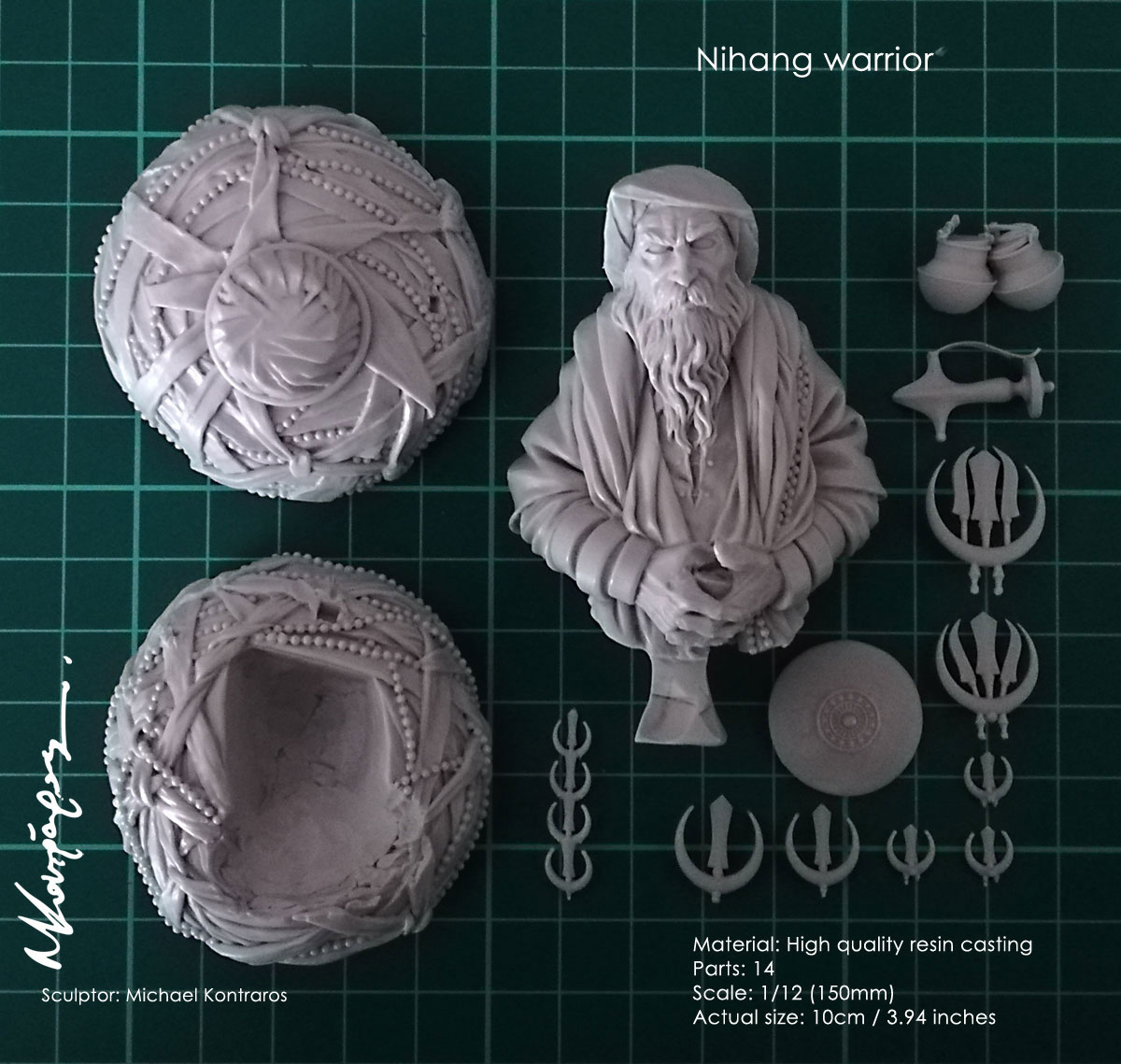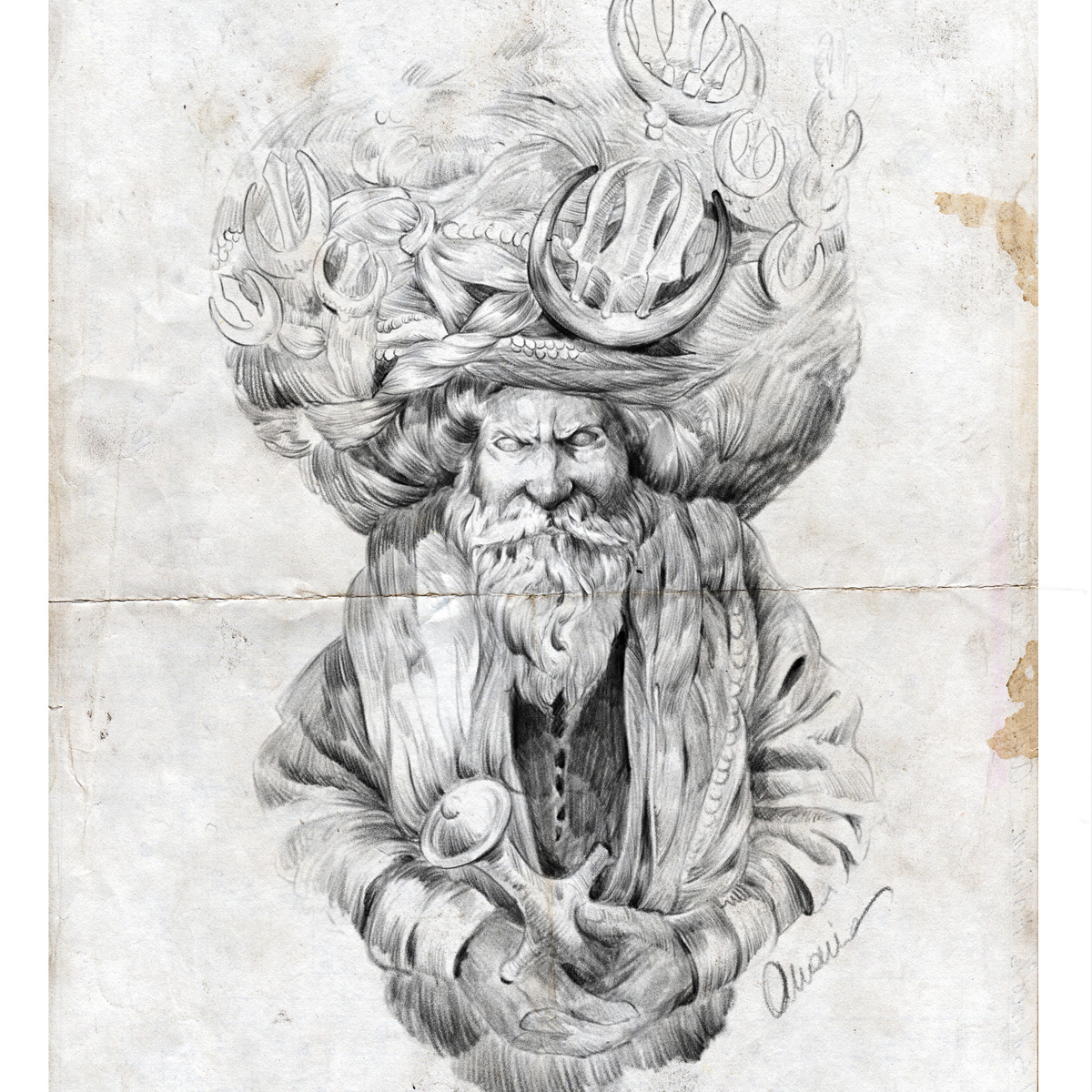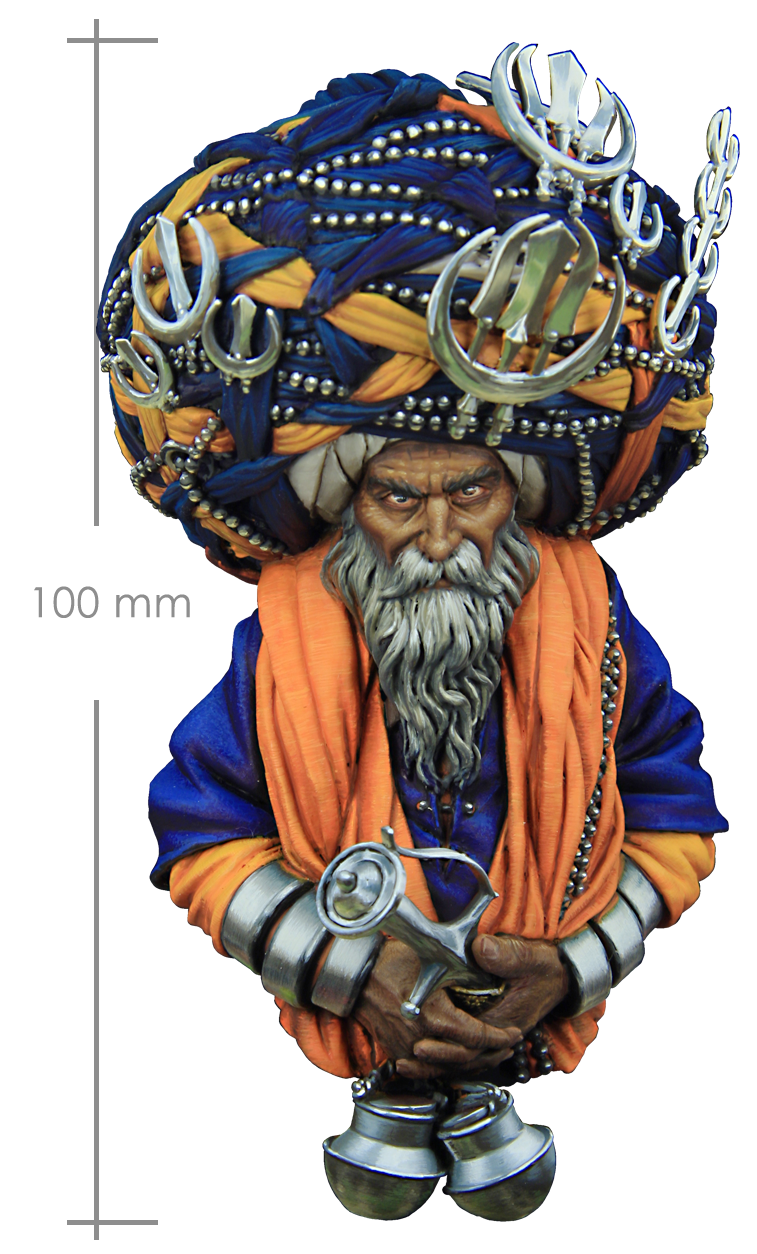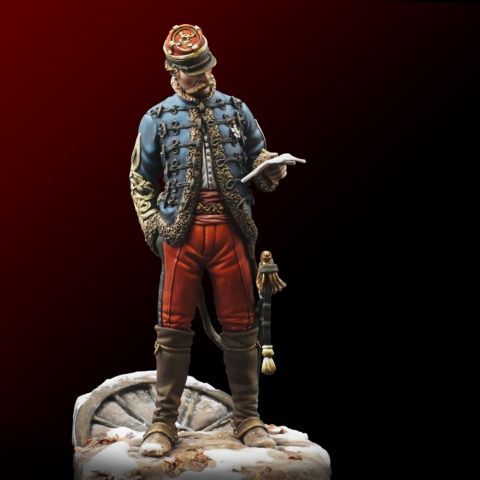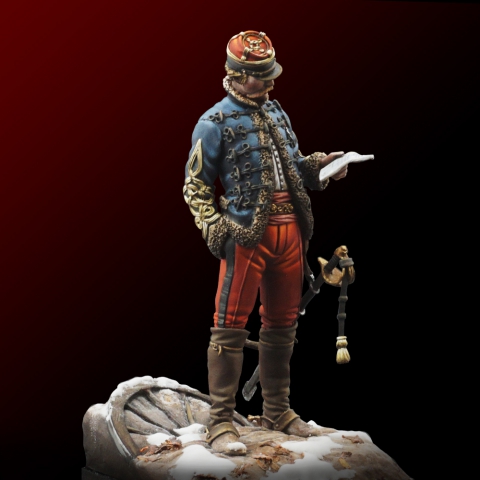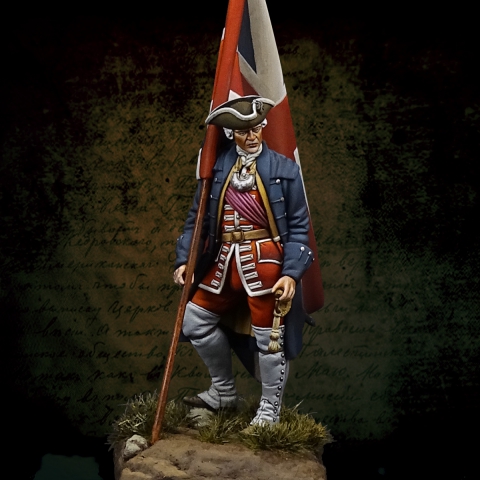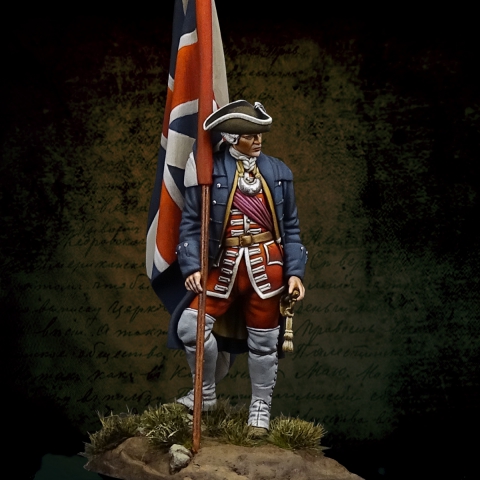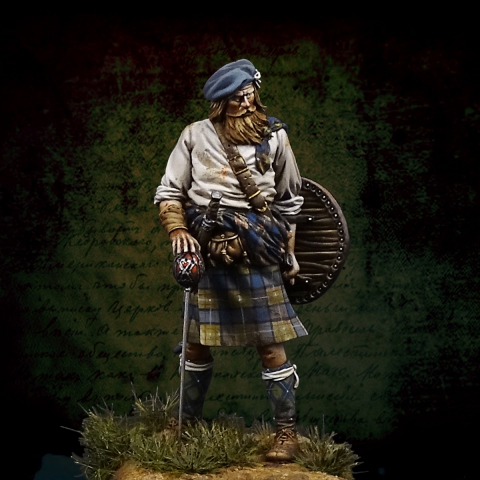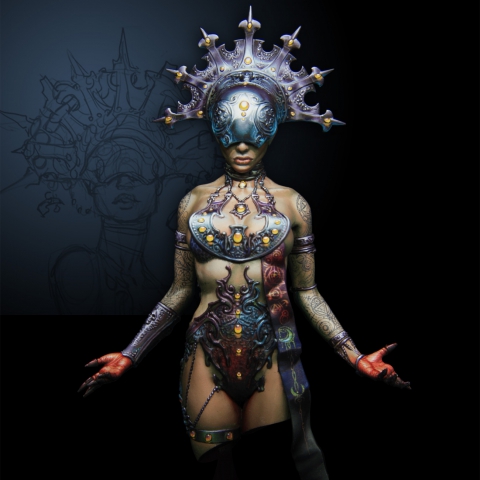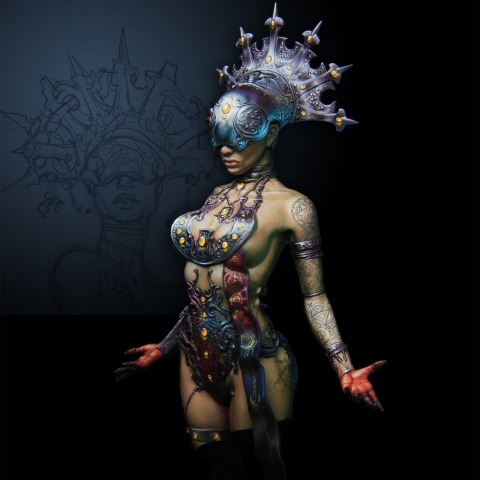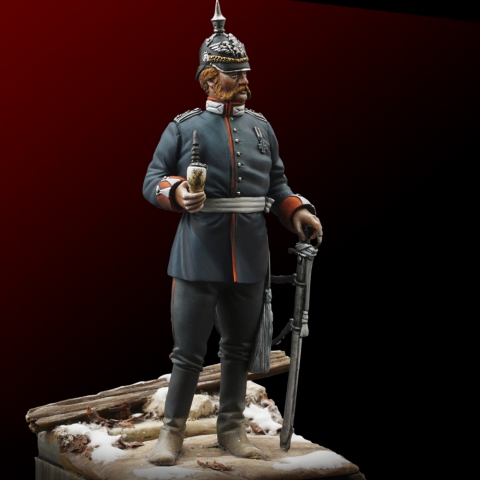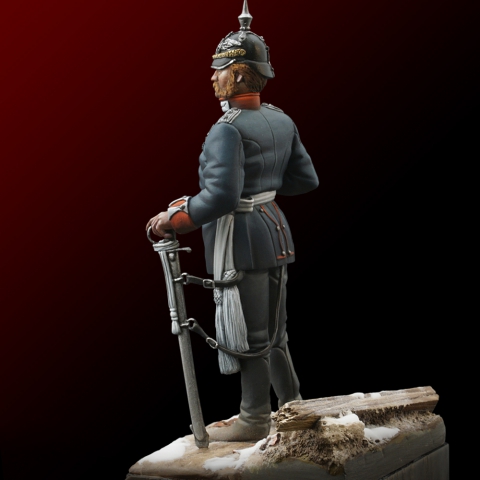Collector’s edition
- Limited edition: 170 copies
- Once sold out will not be re-released
Story of the Nihang
Originating in the Indian subcontinent, the Nihang are an armed warrior order, characterized by their blue colorful robes and decorated turbans.
The Nihang traditional dress is known as “Khalsa Swarupa”, and is made up of full attire of electric blue, edged bracelets of iron, quoits of steel tiered in their huge conical turbans, and the traditional dagger carried by all Sikhs (kirpan). When fully armed a Nihang will also carry a curved sword on his right hip, and a dagger on his left hip, a large chakram around his neck, and an iron chain.
The Nihang warriors were famous for their high and large turbans (dastar bunga) and their extensive use of the chakram or war-quoit. Unknown to many the turbans could be used as a weapon as they were armed with a bagh naka (iron claw) and one or several chakram to slice at opponent's eyes.
Playing a pivotal role in the defense of the Sikh panth after the fall of the first Sikh rule, when Mughal governors were killing Sikhs and during the offensive of Afghan invader Ahmed Shah Durrani, early Sikh military history was dominated by the Nihang. Known for their bravery and ruthlessness on the battlefield, the Nihang managed to win stunning military victories even when managed to heavily outnumbered. Forming irregular guerrilla squads of the armed forces of the Sikh Empire and the Sikh Khalsa Army, the Nihang proved to be formidable adversaries, spreading fear in the ranks of the enemy.
The authority and power of the Nihang came to an end after the fall of Sikh Empire in 1849, and essentially once the British authorities of Punjab appointed an overseer for the administration of the Golden Temple in 1859.

